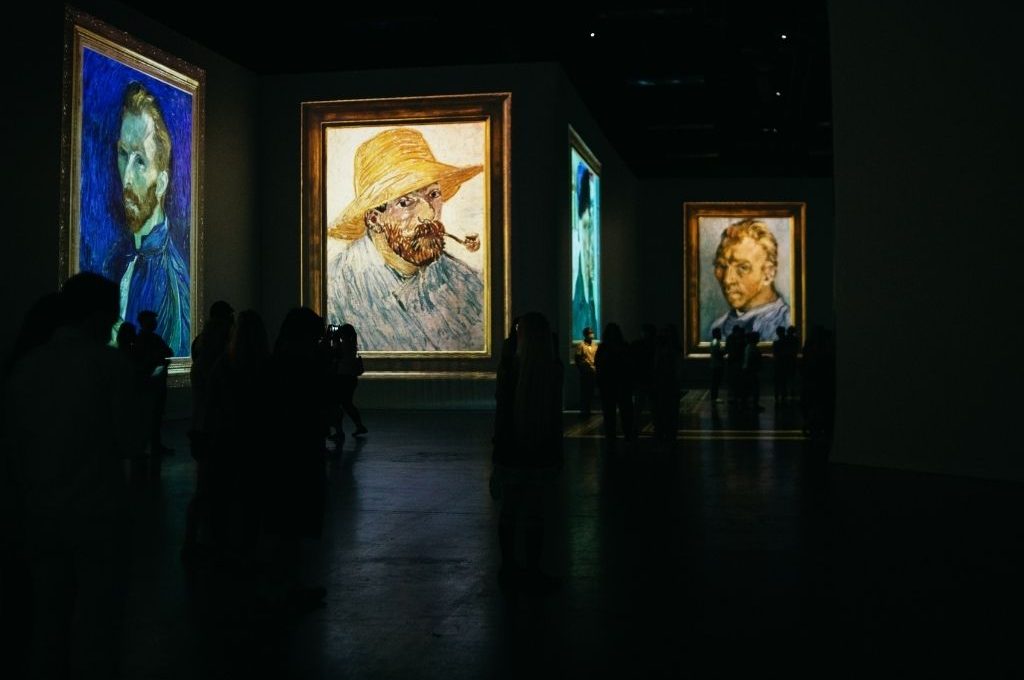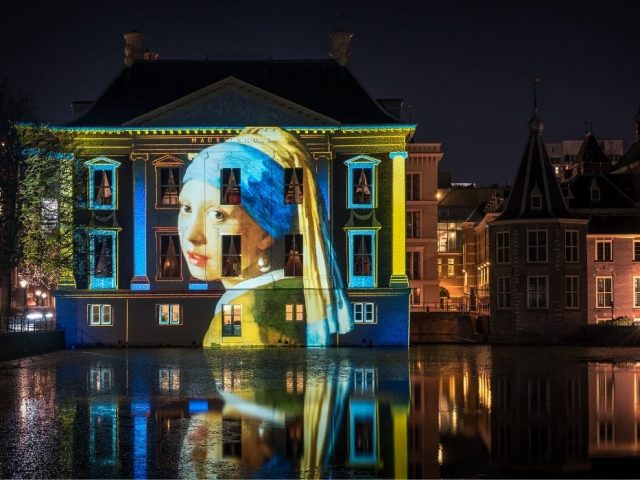Modern artworks refers to art produced from the late 19th century to the present day. It encompasses various styles, movements, and techniques and is known for its emphasis on the rejection of traditional artistic conventions. Significant movements within modern art include Impressionism, Fauvism, Expressionism, Cubism, Surrealism, Abstract Expressionism, Pop Art, and Conceptual Art. These movements have evolved in response to cultural and societal changes over time. Modern art is often associated with the avant-garde and focuses on the individual experience and perspective of the artist.
Modern Art 101
We listed the most known artworks above. However, we should remind you that you can find so much more in the Piri Guide app. All you have to do is download Piri Guide and get lost in the art stories we have selected for you.
Persistence of Memory, Salvador Dali
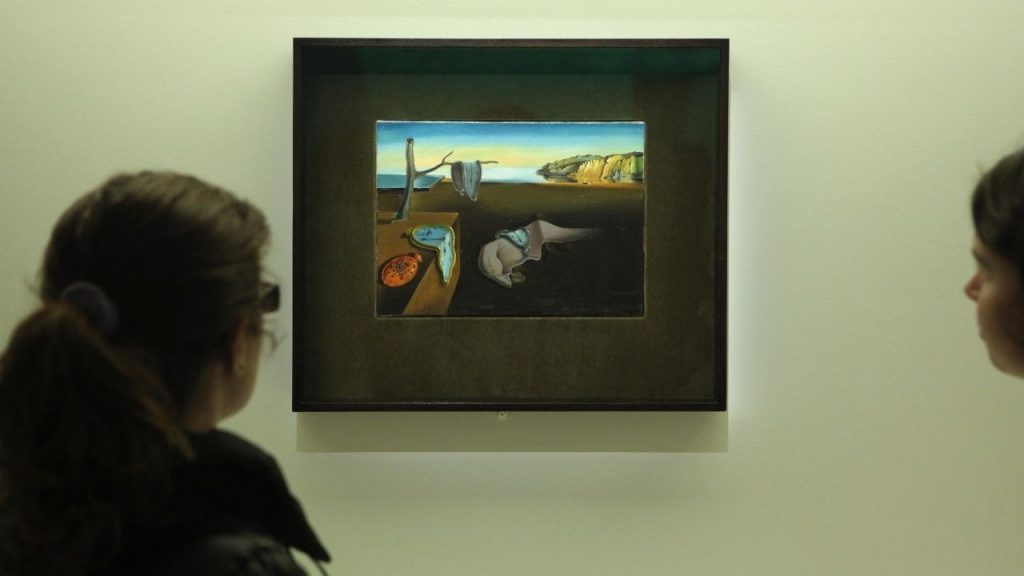
“The Persistence of Memory,” also known as “Melting Clocks,” is one of the most iconic and influential paintings of the 20th century. Created by Salvador Dali in 1931, this surrealist masterpiece continues to enchant viewers with its striking imagery and thought-provoking symbolism.
If you look at the foreground of the artwork, you will see a barren landscape with a distorted, melting pocket watch draped over a tree branch. In the background, you’ll find an enigmatic human face and more melting pocket watches on a branch, representing the fluidity of time and the unfathomable nature of the mind. The unsettling, melting elements and the ants crawling on the clocks actually serve to remind us of the inevitable decay and ultimate end of everything.
"The Great Wave," Katsushika Hokusai
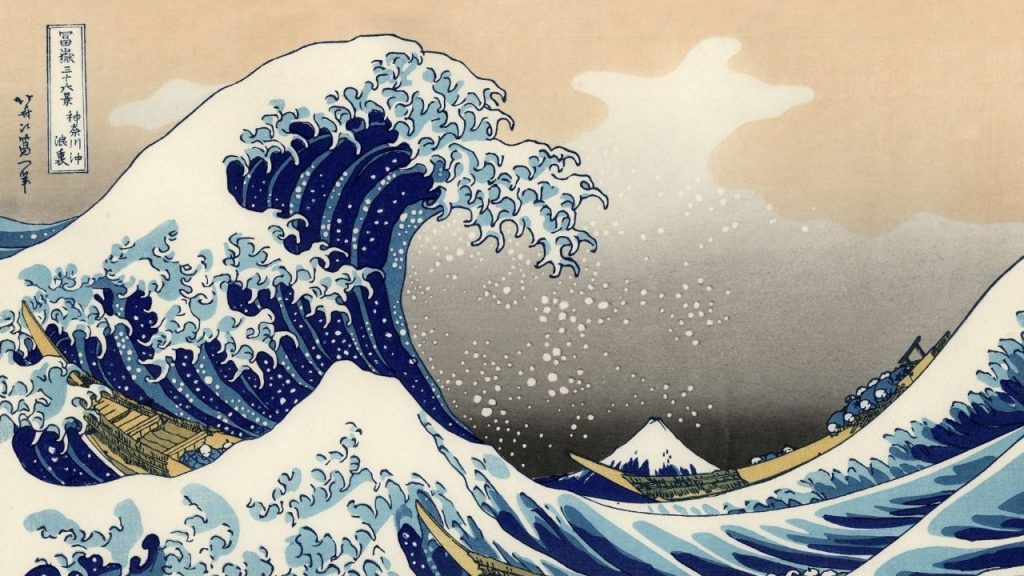
Known as “The Great Wave,” or “The Great Wave off Kanagawa,” this is a woodblock print created by the Japanese artist Katsushika Hokusai in the late 1820s. It is considered a significant example of ukiyo-e art, a Japanese art form that developed during the Edo period. Ukiyo-e, which translates to “pictures of the floating world,” is known for its vivid colors, bold lines, and focus on everyday life and popular culture.
In his print series “Thirty-Six Views of Mount Fuji,” Hokusai depicted the famous Mount Fuji from various perspectives. “The Great Wave” is one of the prints in this series. In this print, we see a massive wave off the coast of Kanagawa Island, with Mount Fuji in the background. The wave is intricately and dynamically rendered, giving the impression that it is about to crash onto the shore. The contrast between the white foam of the wave and the deep blue of the ocean creates a sense of drama and tension. The small boats in the foreground provide a sense of scale, giving the viewer an idea of the power and grandeur of the wave.
"Starry Night," Vincent Van Gogh
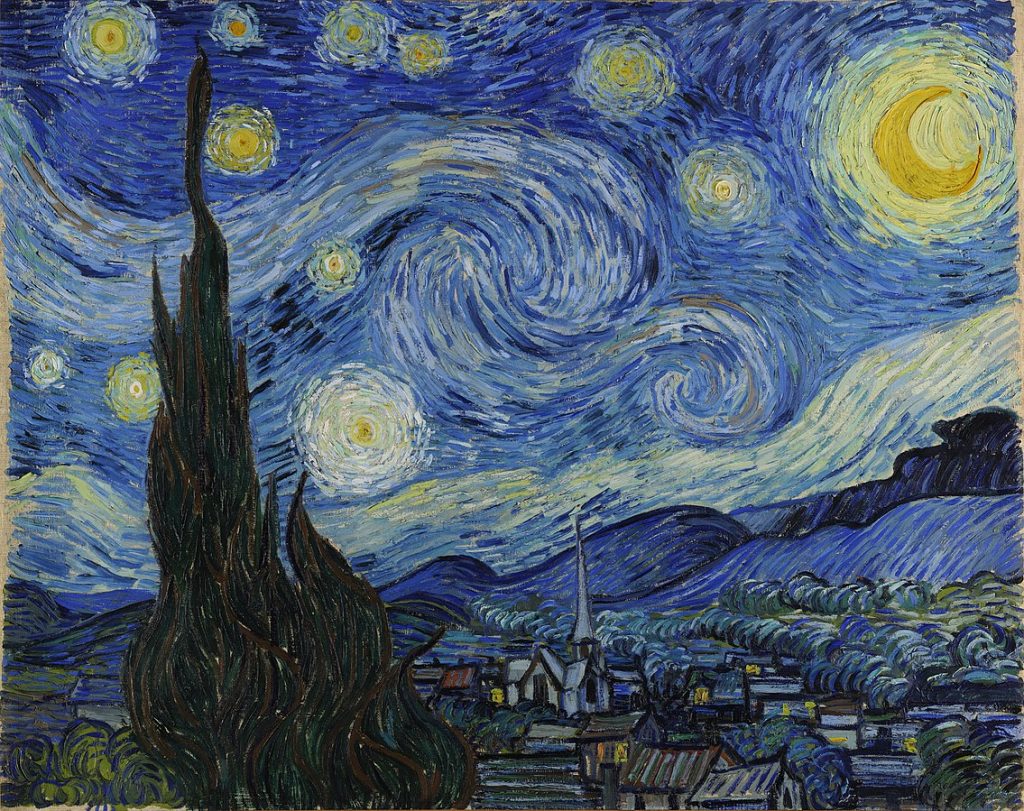
Gustav Klimt’s painting “The Kiss,” completed in 1908 and displayed at the Belvedere Museum, portrays a couple locked in a passionate embrace, sharing a deep and intimate kiss as their bodies intertwine. The couple is surrounded by ornate patterns and symbols that contribute to a sense of romance and emotion. One of the most striking aspects of “The Kiss” is its use of color. Golden hues are applied to create a sense of warmth and light. These tones almost impart a spiritual texture to the scene.
Another remarkable aspect of the painting is Klimt’s use of symbolism. The couple is enveloped by the Tree of Life, a common symbol in art representing the connection between heaven and earth. Klimt was able to convey such powerful emotion without showing the faces of the couple. Not revealing the faces of the couple universalizes the artwork in a way, allowing viewers to see themselves in the couple and establish a personal connection with the mood of the scene.
The Kiss, Gustav Klimt

Vincent van Gogh completed his famous painting “Starry Night” in the year 1889. The painting depicts the village of Saint-Rémy-de-Provence in southern France on a nighttime scene. Bold brushstrokes, vibrant colors, and a sense of movement were used in the artwork to create a feeling of motion.
In “Starry Night,” Van Gogh portrayed the sky as a central element. The swirling stars and crescent moon added a sense of dynamism and energy to the painting. The cool blues and greens of the sky contrast with the warm yellows and oranges of the village, creating a sense of balance and harmony. The village of Saint-Rémy-de-Provence, as mentioned earlier, holds a significant place in this painting. It serves as a dream-like connection between the natural world and the realm of imagination. The village also symbolizes the human experience, representing the struggles and joys of daily life.
If you wish to visit the Van Gogh Museum in Amsterdam, be sure to bring your digital tour guide, Piri, along with you!
"Wanderer Above the Sea of Fog," Caspar David Friedrich.
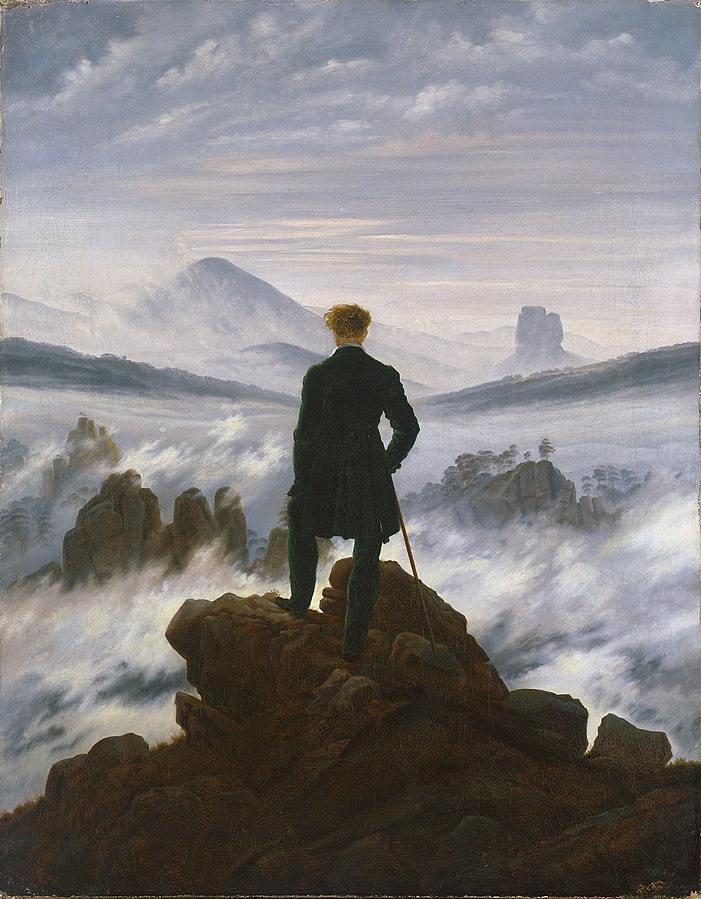
Casper David Friedrich’s 1818 painting “Wanderer Above the Sea of Fog” depicts a lone figure dressed as a wanderer, gazing out over a rocky outcrop at a sea of fog. The figure is portrayed in a contemplative stance, as though lost in thought, looking out into the endless expanse of fog.
In this work, Friedrich uses the natural landscape to create a sense of awe and curiosity. The boundless sea of fog and the rugged cliffs in the background enhance the feeling of vastness and infinity. The solitude of the wanderer serves as a reminder of human insignificance and the smallness in the world. The uncertainty of what lies within the fog contributes to an overall sense of ambiguity, symbolizing the unknown future or the mysteries of life.
The soft, hazy light filtering through the clouds adds an element of mystery and spirituality to the scene. The grayish-white appearance of the fog and the use of soft tones strengthen the contemplative atmosphere of the painting. It’s important to note the true purpose of the wanderer figure in the painting. The wanderer symbolizes human desire for exploration and adventure. His presence in the painting connects the viewer with the same passion for travel. His thoughtful posture also signifies that the journey of exploration is not only a physical one but also a spiritual journey.
As a museum enthusiast, you can also take a look at our content “10 Art Museums You Must Visit” 😊

